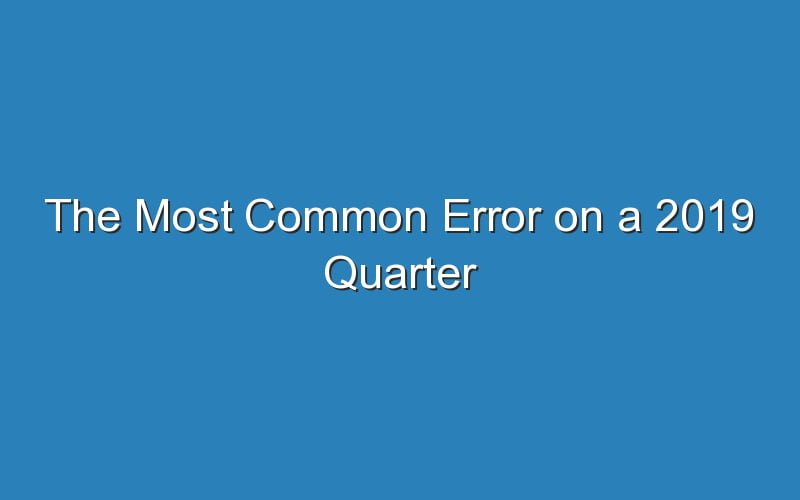The most common error on a U.S. quarter is a strike through. This occurs when something comes between the die and blank on the coin. The current standard for a Quarter is worth about $0.25 face value, but the average circulation is much higher. If you find one in your collection, you can use it to spend, save, or bank it. Unfortunately, the average circulation of U.S. Quarters is far lower than the face value of the coins.
The most common error on a 2019 quarter is an extra treetop. The error is called a doubled die, and it means that there was a misaligned area on the coin. During production, the master tool that impressed the design was knocked out of alignment and slipped. The doubling on the coin depends on the strength of the doubling. However, you can still find coins with the error. If you find one, be sure to inspect the condition closely, as the condition can affect its value.
While this error is rare, it is still a possibility to find one. There are two types of errors on the 2019 P MASSACHUSETTS ABT STATE QUARTER: a bird on a tree and a double die. The first type is a bird in a tree, and the second type is an extra treetop. In both cases, the doubled die error results from a misaligned master tool that has fallen during production. The strength of the doubling determines the value of the coin.
A double die error is also possible. In the case of the Minnesota quarter, the obverse has an extra treetop on the coin. The obverse has the image of a deer, but the design is misaligned. This type of coin is called a “doubled die” error, which means that the design was doubled during the production process. If the doubling is very strong, it will increase the value of the coin.
A quarter that has a double die error is also called a doubled-die error. The word “doubled” refers to a misaligned area on the reverse of a coin. For instance, the bird on a tree is an example of a double-die error. The other types of errors are caused by a misaligned die on the obverse. This type of mistake is not as common, but the bird on a quarter does not mean it isn’t worth much.
Another error on a 2019 quarter is a bird on a tree. This type of error is usually a small bird on the tree. Other errors include a double-die die on a California-based coin. A Texas-based quarter has an error with the same type of obverse. A clad obverse is the more common error. The other types of mistake is a double-die coin.
In the state of Minnesota, the “sacred trees” on a 2019 quarter are the symbols of the lakes, forests, and wildlife. There are many types of errors on this quarter. In addition to double-diseadens, there are also double-dieadens on the coin. A good quality coin is a smooth edge. A perfect example of a double-died coin can be found at the National Parks website.
A double-died-die error on a quarter is a double-die coin. The die of a coin is not solid. If it is double-died, the coins are not in the same state. This is an error on a coin that is not in the mint’s design. It’s not an obverse-obverse-style quarter. The date of a 2018 obverse-sale is printed on the reverse side of the coin.
The Minnesota quarter is a beautiful coin that celebrates lakes, forests, and wildlife. A number of errors have an extra treetop, a “double-die” error, or a double-died die. This type of error is a mistake made during the production process of a coin. It affects the coin’s value. Its value is determined by the strength of the doubling. Some of these coins are valuable and worth collecting.
The 1999 Spitting Horse quarter is a popular example of an error coin with a long leaf on the corn stalk. Some of these coins were minted in very low-grade quality and have a high mintage. The 1998 Nevada Quarter, for example, is an example of a large-minted, low-quality coin with a single-leaf. Unlike most US coin collections, these coins have only a small amount of gold on them.

